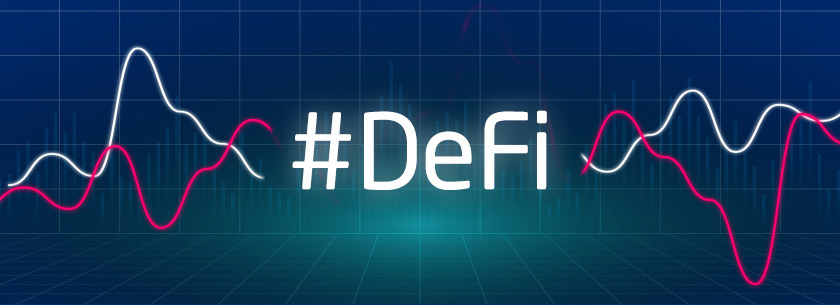According to experts, the idea of decentralized finance may turn out to be both a real investment opportunity, and ready to burst into a financial bubble, or possibly both at the same time.
For example, Qiao Wang, a former product manager at Messari and now a well-known crypto trader, believes the emerging economic sector has tremendous growth potential.
As evidenced by the facts - the total value of assets associated with decentralized finance, in a little less than a year has grown from 1 billion dollars to almost 8 billion. In addition, TVL has increased by more than 1,000 percent on all DeFi platforms in dollar terms since the beginning of 2020, and it does not seem to be slowing down anytime soon.
According to Qiao Wang, “From an investment perspective, the asymmetric rates of BTC until 2013 and ETH until 2015 are the same as DeFi until 2021. And yes, this is a once-in-a-decade chance (the opposite has not yet been proven ). So if you missed the first two opportunities, try not to miss the third."
This, however, differs from the position of the founder of Messari - Ryan Selkis, who believes that decentralized finance is a bubble that is destined to burst soon. He explained the increased popularity of the phenomenon by the work of the Ponzi scheme and a leap of unhealthy excitement around the idea of yield farming ”(income farming), adding that high transaction costs (ether fees) reduce the possibility of obtaining large final profits for ordinary users.
Comparing the economy of decentralized finance and the multimillion-dollar, or rather billion-dollar, traditional banking economy, it is clear that the new idea has some potential for growth. But even if we compare it with the cryptocurrency market, it is noticeable that its volumes are small. So the total capitalization of 37 leading DeFi tokens is $ 6.7 billion, which is approximately 2 percent of the market capitalization of all cryptocurrencies.
Many DeFi proponents believe that the sector will continue to thrive, simply distracting investors from "ghost blockchains," projects born during the 2017 ICO boom that has never been able to attract users. However, even despite this, their total cost still exceeds the capitalization of decentralized finance.
This question was also asked by Tyler Reynolds, an engineer at Google Payments. How exactly we came to the situation, where cryptoassets that “have no future” are still worth more than popular DeFi tokens? As an example, he cited projects with a billion-dollar market capitalization - XRP, Bitcoin Cash, Bitcoin SV, EOS, Cardano and Stellar, in sharp contrast to, for example, the "promising" YFI from Yearn Finance, that worth "only" $ 670 million.
However, the DeFi "bubble" has recently blown away somewhat - due to the fact that a wave of buggy, primitive and monotonous "schemes for pumping out investors' money" has seriously raised the prices of transaction costs in the Ethereum ecosystem. However, Xiao Wang also said about this: "Over the past 2 months, a lot of garbage projects have appeared in the system, but don't let this distract you from the main thing."
Instead, he suggested experimenting with some of the best DeFi projects to better understand how users behave in a young and unusual financial ecosystem.
He also acknowledged that the phenomenon of "yield farming" could lead to the formation of a bubble effect, but in the long run, this does not matter.
According to him, “you can simultaneously believe that “yield farming" is a bubble with zero profitability, which will soon burst, and that the very idea of decentralized finance is the future.”
Published on the EXBASE based on materials from cointelegraph.com





